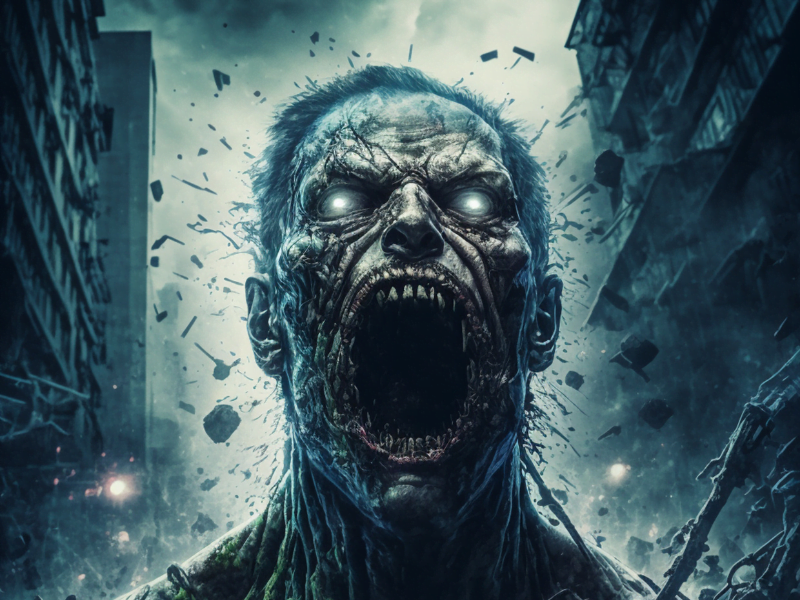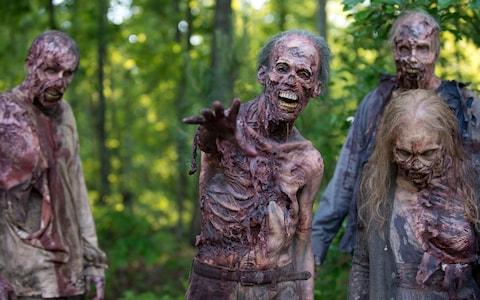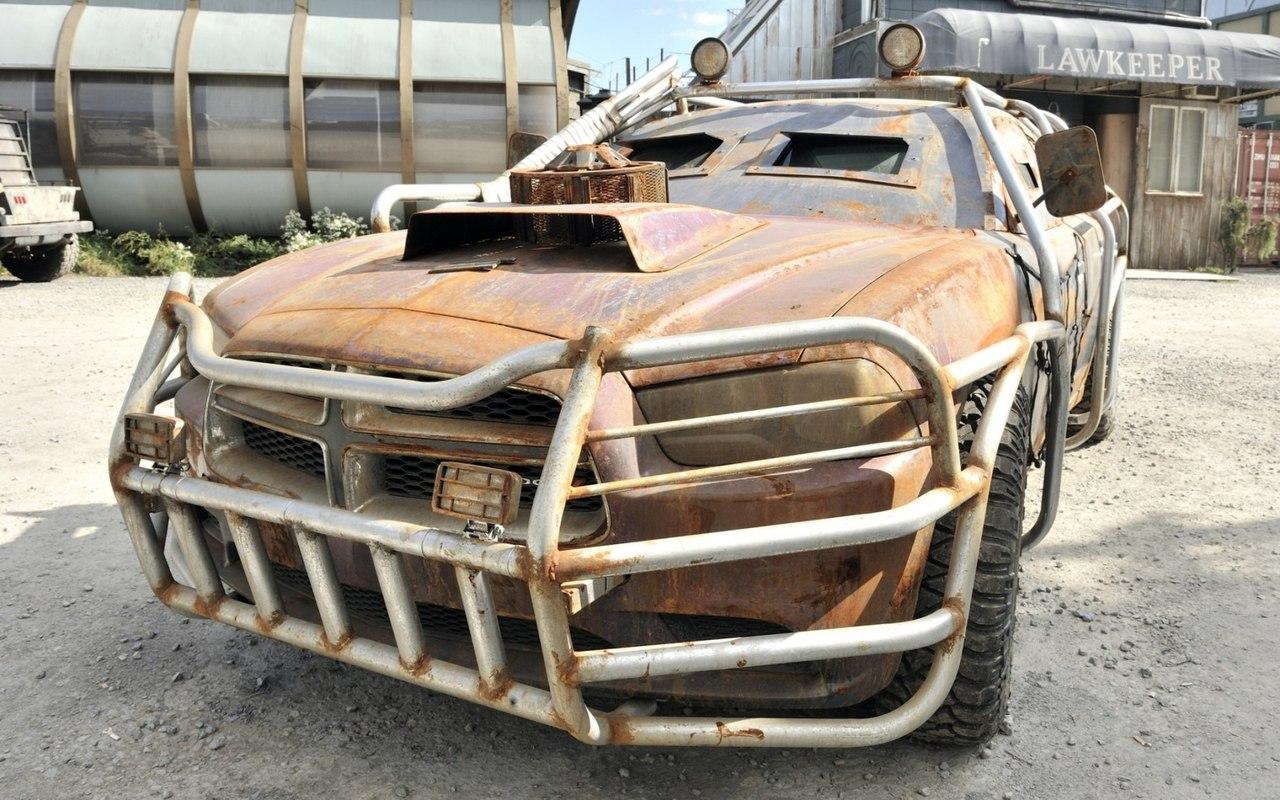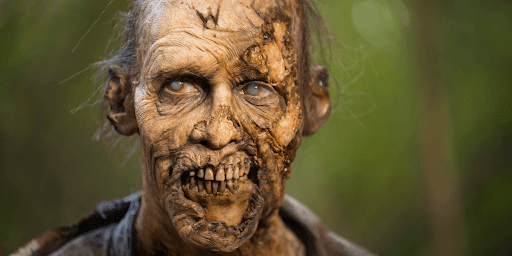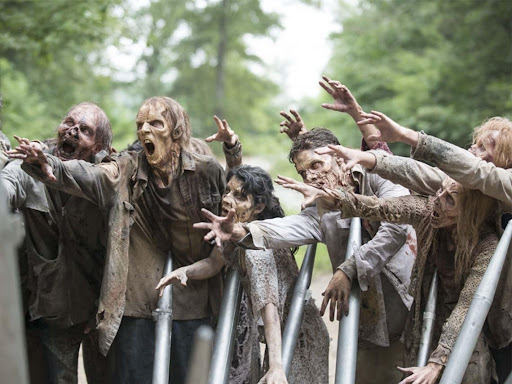Zombies are often portrayed as fearless, relentless, and unstoppable creatures, but have you ever wondered if what would zombies be afraid of?
As it turns out, zombies, like many other creatures, have their own set of fears and phobias that can make them vulnerable.
In this post, we’ll explore some of the things that zombies are afraid of and how you can use this knowledge to survive a zombie apocalypse. From fire and loud noises to guns, explosions, and even decapitation, you might be surprised at what can keep a zombie at bay. So, if you want to outsmart the undead, keep reading to learn more!
Why do zombies fear fire?
The Fear of Fire: Burning the Undead
One of the most prevalent fears attributed to zombies is their vulnerability to fire. In numerous zombie narratives, fire is portrayed as an effective means of incapacitating or destroying these undead beings. Several reasons contribute to this portrayal.
- Destruction of Brain Tissue: In many zombie lores, the brain is the central organ controlling the body’s movements. Fire can rapidly destroy brain tissue, and since zombies are often reanimated corpses, their brains might be more susceptible to damage. As a result, fire can effectively incapacitate or “kill” them.
- Symbolic Cleansing: Fire is often seen as a purifying element in mythology and folklore. It’s used to cleanse and destroy evil entities. In the context of zombies, fire can be viewed as a symbol of washing the world of the undead menace.
- Primal Fear of Danger: Fire is a natural element that has been a danger to living beings throughout human evolution. Fear of fire because of its destructive potential is ingrained in our instincts. Despite being reanimated corpses, zombies might still have some residual traces of their past human instincts, including a primal fear of fire.
- Visual and Dramatic Impact: From a storytelling perspective, fire can create intense and visually striking scenes. It adds tension and drama to zombie encounters, making the threat of zombies feel more immediate and dangerous.
- Literary and Cinematic Tradition: The fear of fire in zombie lore could be a tradition carried over from earlier works in the genre. Once one popular zombie story introduced the concept, subsequent reports might have adopted it to maintain consistency and familiarity within the genre.
Why do zombies fear decapitation?
The Fear of Decapitation: Severing the Undead
The fear of decapitation is another common trope associated with zombies in popular culture. Similar to their fear of fire, the reasons for zombies’ vulnerability to beheading can vary depending on the narrative and creative choices of writers and creators. Here are some possible explanations for why zombies are often depicted as fearing decapitation
- Brain Dependency: In many zombie depictions, the brain is the central control center for their motor functions and reanimated state. By severing the head from the body, the connection between the brain and the body is disrupted, rendering the zombie immobile or “dead” once again.
- Symbolic Weakness: Decapitation has long been used to symbolize ultimate defeat and death. Removing the head is a visceral and definitive way to “kill” an opponent. In the case of zombies, it represents the only surefire way to neutralize the undead threat.
- Mythological Origins: The concept of decapitation as a means of destroying undead creatures can be traced back to various mythologies and folklore. Beheading is often depicted as an effective way to kill vampires, revenants, and other supernatural beings. Zombies might have inherited this vulnerability from those older traditions as a modern manifestation of undead creatures.
- Visual Impact: Decapitation is a visually powerful and dramatic action. It can create intense and memorable scenes in storytelling, making it a popular choice for zombie-themed works seeking to evoke fear and tension.
- Genre Convention: Over time, certain elements become conventions within a genre. Once the idea of beheading as a vulnerability for zombies gained popularity in zombie movies, books, and games, subsequent works within the genre often followed suit to maintain consistency and familiarity for audiences.
Why do zombies fear a headshot?
The concept of headshots being particularly effective against zombies is rooted in the idea that the brain is the central control center for their reanimated bodies. Several reasons contribute to this portrayal.
- Brain Destruction: In many zombie mythologies, the only way to permanently neutralize a zombie is by destroying its brain. A headshot, typically achieved by a well-aimed bullet or other projectile, can directly impact the brain and disrupt its function, effectively “killing” the zombie.
- Brain Dependency: Zombies are often depicted as creatures whose motor functions and reanimation depend on their brains. Damaging the brain through a headshot disrupts their ability to move and function, rendering them immobile and inert.
- Consistency with Other Zombie Weaknesses: The vulnerability of zombies to headshots complements other weaknesses, such as fear of fire or decapitation. It adds to the overall narrative and creates a consistent set of rules for dealing with the undead threat.
- Visual and Dramatic Impact: From a storytelling perspective, headshots are visually striking and dramatic. The sight of a well-aimed shot to a zombie’s head adds tension and intensity to action scenes, heightening the sense of danger and urgency.
- Genre Tradition: As with other zombie characteristics, the concept of headshots as a vulnerability likely stems from earlier works in the genre. Once established, subsequent zombie stories often incorporate headshots to effectively dispatch the undead.
- Easy Identification: In chaotic situations, headshots provide a clear and recognizable way to identify whether a zombie has been neutralized. This visual cue lets characters in the story (and the audience) know that a particular threat has been dealt with.

Why do zombies fear dismemberment?
Zombies are often shown to fear or be adversely affected by having their limbs or body parts severed. Several reasons contribute to this portrayal.
- Loss of Mobility: Dismemberment can impair a zombie’s ability to move and pursue potential victims. By severing limbs, survivors can slow down or immobilize the zombie threat, making it easier to escape or deal with them.
- Destruction of Brain Connection: As with headshots, some zombie lore attributes their reanimation and movement to their brains. Severing limbs may disrupt the brain’s ability to control the disconnected body parts, rendering the zombie less dangerous.
- Symbolic Vulnerability: Dismemberment is a powerful visual representation of vulnerability and defeat. It shows that the undead creature can be incapacitated and that humans have a chance to defend themselves against overwhelming odds.
- Strategic Advantage: In zombie survival scenarios, dismemberment can be a practical tactic for reducing the threat. For example, survivors can create barriers to impede the zombies’ movement or create traps by taking out their legs.
- Horror and Shock Value: Dismemberment scenes add to zombie-themed media’s horror and shock value. The sight of body parts being torn off or severed can evoke strong emotional reactions from the audience, heightening the tension and fear.
- Consistency with Zombie Weaknesses: The fear of dismemberment complements other vulnerabilities that zombies may have, such as fear of fire or decapitation. It helps establish a consistent set of rules for dealing with zombies in a fictional universe.
Why do zombies fear explosions?
In some zombie-themed works, zombies are depicted as fearing explosions or being adversely affected by them. The portrayal of zombies fearing explosions is primarily a creative choice by writers and creators to add intensity and danger to the narrative. Several reasons contribute to this depiction.
- Destruction of Brain and Body: Explosions can cause extensive damage to the bodies of zombies, including their brains. As mentioned before, in many zombie lore, the brain is the central control center for their reanimated bodies. By destroying the brain, explosions can permanently render zombies immobile or “kill” them.
- Mass Elimination: Explosions are a powerful and effective means of dealing with large groups of zombies. In zombie-apocalyptic scenarios where hordes of the undead pose a significant threat, explosions offer survivors a way to level the playing field and increase their chances of survival.
- Fear of Fire and Destruction: Explosions often involve fire, another common zombie vulnerability. The combination of destruction and fire can create an overwhelming threat that zombies instinctively avoid.
- Visual and Dramatic Impact: Explosions are visually stunning and dramatic. They create intense and high-stakes action scenes, adding tension and excitement to the story.
- Strategic Advantage: In survival situations, survivors may use explosives strategically to create traps or defend their territories against zombie attacks. The fear of explosions can serve as a deterrent for zombies and force them to avoid certain areas.
- Genre Convention: Once established in earlier works, the fear of explosions might become a recurring element within the zombie genre. Subsequent stories often follow established conventions to maintain consistency and familiarity with audiences.
Why do zombies fear Extreme Physical Damage?
In some zombie-themed works, zombies are depicted as fearing extreme physical damage, which refers to significant bodily harm beyond typical injuries. This portrayal heightens the danger and vulnerability of these undead creatures. Several reasons contribute to zombies being afraid of extreme physical damage.
- Loss of Mobility and Function: Extreme physical damage, such as severe limb destruction or mutilation, can impair a zombie’s ability to move and function effectively. This loss of mobility makes them less threatening and easier for survivors to deal with.
- Destruction of Vital Organs: In some portrayals, zombies may retain some of their human-like physiology, even if they are reanimated corpses. Extreme physical damage can target vital organs, making it harder for them to sustain movement and reanimation.
- Symbolic Weakness and Defeat: Extreme physical damage visually represents vulnerability and defeat. It shows that despite their relentless nature, zombies can be hindered and ultimately destroyed.
- Fear of Pain and Harm: While zombies are often depicted as mindless and impervious to pain, extreme physical damage can still trigger some primal fear response. The fear of pain or harm could instinctively deter them from engaging in situations that could lead to severe injuries.
- Dramatic and Horror Element: Extreme physical damage adds to zombie-themed media’s horror and shock value. The sight of zombies suffering gruesome injuries can evoke strong emotional reactions from the audience, intensifying fear.
- Consistency with Zombie Vulnerabilities: The fear of extreme physical damage complements other weaknesses that zombies may have, such as vulnerability to fire, decapitation, and headshots. It establishes a consistent set of rules for dealing with zombies in a particular fictional universe.

Why do zombies fear drowning?
The fear of drowning is not a universal characteristic of zombies in all zombie-themed works. Still, it has been portrayed in some stories as a vulnerability for these undead creatures. The depiction of zombies fearing to drown is largely a creative choice made by writers and creators to add a layer of danger and weakness to the zombies. Several reasons contribute to this portrayal.
- Loss of Mobility: Zombies are often shown to be slow-moving and clumsy creatures on land. When submerged in water, their limited mobility is further hindered, making them less threatening and more manageable for survivors.
- Decomposition and Water Damage: Zombies are typically depicted as reanimated corpses. When submerged in water, their bodies can deteriorate and weaken due to the effects of decomposition and exposure to moisture.
- Symbolic Weakness: Drowning is a standard symbolic representation of vulnerability and helplessness. By showing zombies being susceptible to drowning, creators can highlight their weaknesses and portray them as more than just mindless, unstoppable monsters.
- Primal Fear of Water: In human history, water has long been associated with danger and fear. The fear of drowning is a first instinct that many living beings have, and by portraying zombies as sharing this fear, creators can tap into that innate sense of dread.
- Strategic Advantage: In specific zombie survival scenarios, water bodies like rivers, lakes, or oceans can act as natural barriers against zombie hordes. If zombies fear drowning, survivors can use bodies of water as a defense, limiting the undead’s movement and access to certain areas.
- Dramatic Element: Drowning scenes can create intense and suspenseful moments in storytelling. They add to the horror and tension of the narrative, making it more thrilling for the audience.
Conclusion
Zombies’ vulnerabilities and fears in popular culture play a crucial role in shaping the horror and excitement of zombie-themed works. The fear of fire, decapitation, headshots, dismemberment, explosions, extreme physical damage, and drowning serves to heighten the danger and suspense of facing these undead creatures.
While zombies are fictional constructs, their vulnerabilities reflect the creativity and ingenuity of writers, filmmakers, and game developers in creating captivating and thrilling zombie narratives. The exploration of zombies’ fears reveals the underlying themes of vulnerability, humanity, and the resilience of the human spirit in the face of apocalyptic horror.
